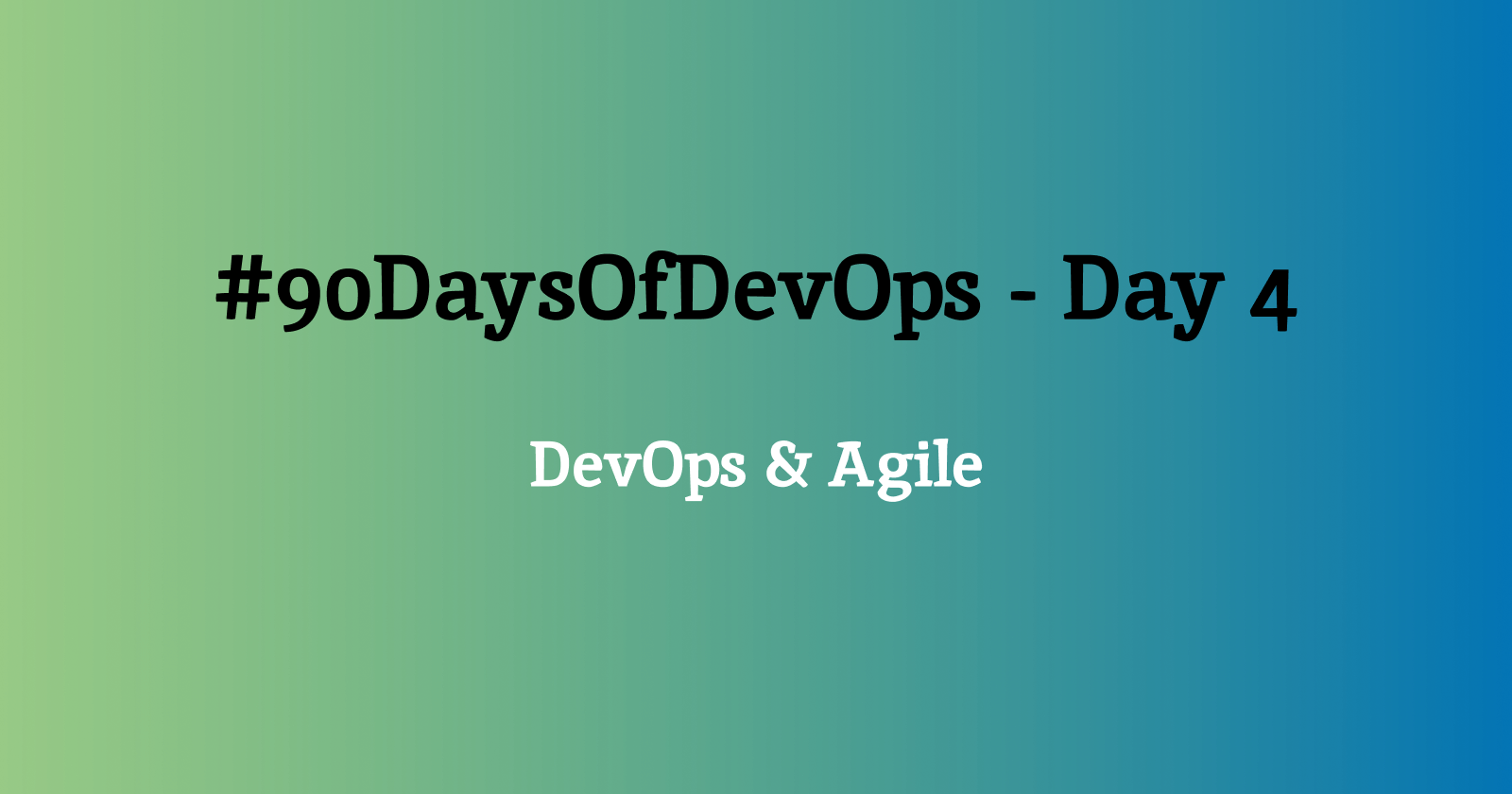#90DaysOfDevOps - Day 4
 Tonye Waribo
Tonye Waribo
I Certainly believe that Agile and DevOps are both methodologies which aim to improve and streamline the software development life cycle and the different processes when trying to achieve tasks. Although they both have their own separate life circles and methodologies, a simple walk through could give you a snippet of how and where they relate with each other.
The Agile methodology is a transformative workflow ideology primarily applied in software development and project management, product management and it stands out for its commitment to continuous improvements, collaboration, and adaptive problem-solving patterns. Rooted in the principles articulated by the Agile Manifesto founders, it champions:
Individuals and interactions over processes and tools
Working software over comprehensive documentation
Customer collaboration over contract negotiation
Responding to change by following a plan
These principles guide Agile’s ethos, putting customer needs at the forefront and ensuring the delivery of effective solutions. To distill these principles into actionable guidelines
DevOps methodology is basically to successfully adopt an organization's high-quality software and apps development process which can be delivered at the fastest volume, and with fewer errors by following the agile way.
Iterative Development: Breaking down the project into small, manageable increments allows for continuous improvement.
Customer Collaboration: Regular communication with customers and stakeholders ensures that the product aligns with their needs and expectations.
Adaptability to Change: Agile welcomes changes even late in the development process, promoting flexibility to respond to evolving requirements.
Cross-functional Teams: Agile encourages collaboration among team members with diverse skills to enhance efficiency and productivity.
Working Software as a Measure of Progress: The primary measure of progress in Agile is the delivery of functional software, providing tangible results at the end of each iteration.
Key DevOps Practices:
Continuous Integration (CI): Developers regularly integrate their code changes into a shared repository, where automated builds and tests are triggered to ensure code quality.
Continuous Delivery (CD): Code changes that pass CI are automatically deployed to production-like environments, making it easier to release new features quickly and reliably.
Infrastructure as Code (IaC): Infrastructure is managed and provisioned through code, enabling consistency and reproducibility across different environments.
Automated Testing: Automated testing is crucial for ensuring that code changes do not introduce errors and that the software remains stable throughout development.
Continuous Monitoring: Real-time monitoring helps identify and address issues promptly, improving the overall reliability of the system.
Agile in DevOps: In the context of DevOps, Agile principles align with the goal of delivering software more rapidly and reliably. Agile provides the framework for developing features incrementally and responding to changing requirements, while DevOps practices automate and streamline the processes involved in building, testing, and deploying these features.
What more can I say, this relationship makes the life of developers and operations team easy and their jobs enjoyable.
Subscribe to my newsletter
Read articles from Tonye Waribo directly inside your inbox. Subscribe to the newsletter, and don't miss out.
Written by
